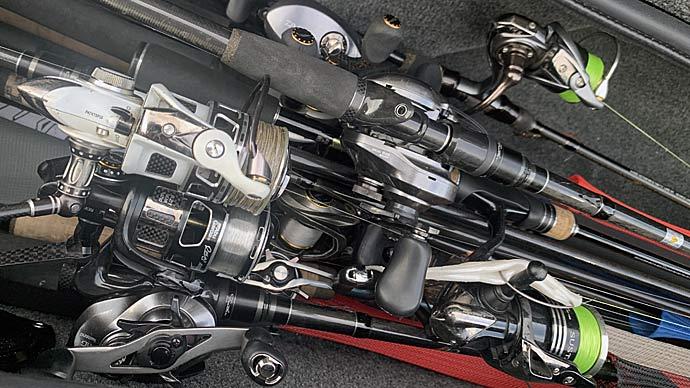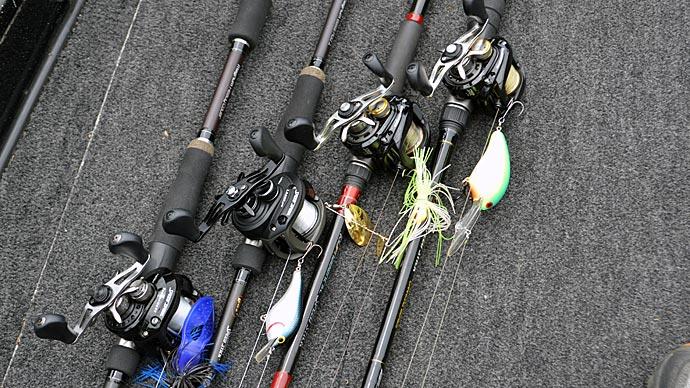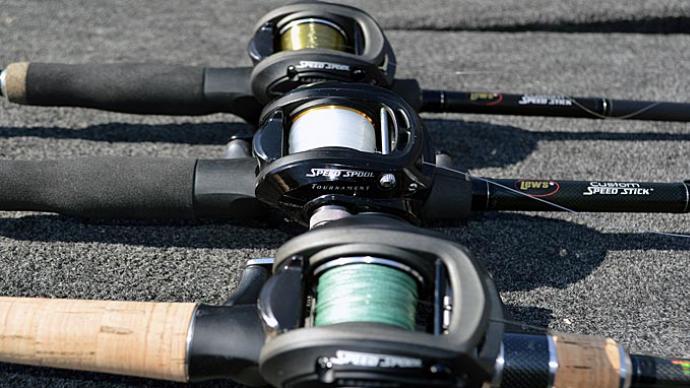
Ok, you have your new reel and a fresh spool of line. Now it’s time to spool your line. It sounds simple enough, but you must take steps to ensure everything is done correctly. This will save you plenty of hassle in the long run as you will have better casting distance and accuracy while also giving you fewer tangles and issues that could lead to lost fish or money in the form of wasted line.
The Basics
With spinning reels, line management is critical to prevent line twists, and the common thinking is to have the line come upwards from the spool, with the spool laying flat and the label facing up. This allows the line to come off the spool of line and onto the spool of your reel the same way it was put on at the factory, eliminating future problems. It's essential for monofilament and fluorocarbon lines, but you can spool braided line any way you like as it is limp and has no line memory, which are coils in the line.
For baitcast reels, the same principle applies, and you want to ensure that the line goes on the reel the same way as it was spooled on from the factory. The most commonly accepted practice is to position the reel vertically, with the line coming from the top of the spool towards your reel.
There are several ways to get the job done for both reels.
With A Little Help
One of the tried-and-true methods for spooling line only needs a pencil, stick, screwdriver, or any other long and thin object and a buddy. Have them hold the stick inserted through the spool and reel your line onto it. It's an easy way to spool a reel, and they can add the needed tension on their end or use your other hand to add some pressure to make sure the line is tight before it goes on the reel.
This method works great, but it doesn't work quite well if you are alone. Some anglers have gotten creative and used this same method and put their toes to work, holding the pencil or with their feet, but not everyone can accomplish that level of coordination. The following ways can be done by yourself and work just as well.
Tips For Spooling Alone
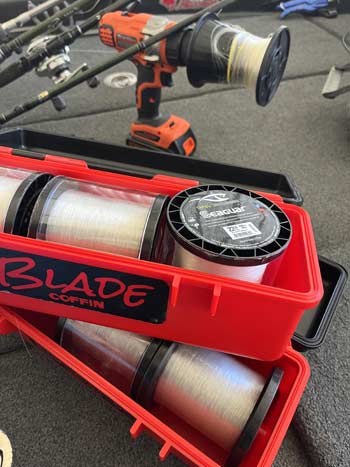
When trying to spool line yourself, several different gadgets and tools on the market will make things easier. They all do the trick, but a few low-budget options will work in a pinch.
A straightforward way to spool on the water is to connect your line to the reel, get it started onto the reel with enough tension, and then throw the spool of line into the water and reel it onto your line. The resistance from the water is more than enough to apply the proper tension. The only real danger is having the spool get away from you, but anglers have used this little trick for years, and it helps them spool a reel in a hurry. It works for both baitcast and spinning reels.
Another simple option is to place the reel in a box or plastic container, such as a hotel ice bucket. It works well for bulk spools; the container will keep the spool in place as you spool a baitcast or spinning reel. Other tackle boxes, such as the Bass Mafia Blade Coffin, also do the trick and make for a great way to store and protect bulk line spools.
When spooling small filler spools to baitcast reel, you can also hold the spool and rod in your hand with your fingers placed over the hole in the middle of the reel. Then reel and add line to your reel. It requires a bit of dexterity but works well for a quick respool while on the water.
Line Spooling Tools And Money-Saving Tips
Spooling line is essential to fishing, so many companies have developed great products to make things easier for anglers. Spooling stations such as the Berkley Portable Spooling Station allow you to clamp your reel in, similar to a reel seat, and then have a bar and tension devices to hold your spool. It works well and gets the job done.
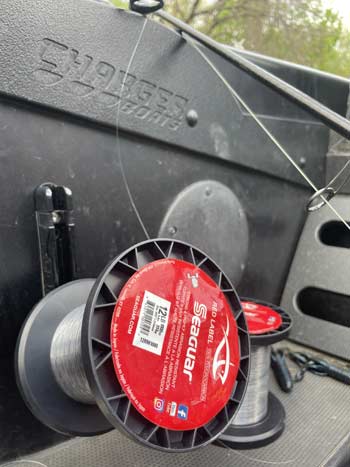
A company called DD26 makes an ingenious Spool Stix Line Winding System device that will mount to your boat or other surfaces. It's a simple metal rod that can be pulled out when ready to spool line and works great. When not in use, push the rod back in, and it is clean and out of the way. The entire device can be mounted anywhere convenient to you and uses simple double stick tape to mount it.
A straightforward way to speed up the spooling process and save money is to utilize a backing line on your reel. It can be any line; the old line will do the trick. Most line on your reels will never see the light of day, no matter how far you cast, so filling roughly half of the spool with backing will save money and allow you to re-spool more often.
You can reverse the line and put it on another reel with a braided line. The line towards the bottom doesn't see water and will still look fresh on another reel. This little tip works best for braided lines because the limp properties of the line do not create any memory or coiling. Fluorocarbon and monofilament lines will begin to take on the properties of a reel after a while, and being tightly spooled onto a reel will cause more memory, so this trick doesn't work as well with either of these lines.
Spooling line on your reels is part of the game; no matter how often you choose to do it, these methods will make your life easier. Fishing line is a critical part of fishing success, and spooling it right will ensure you have the best performance from your reels and line.


